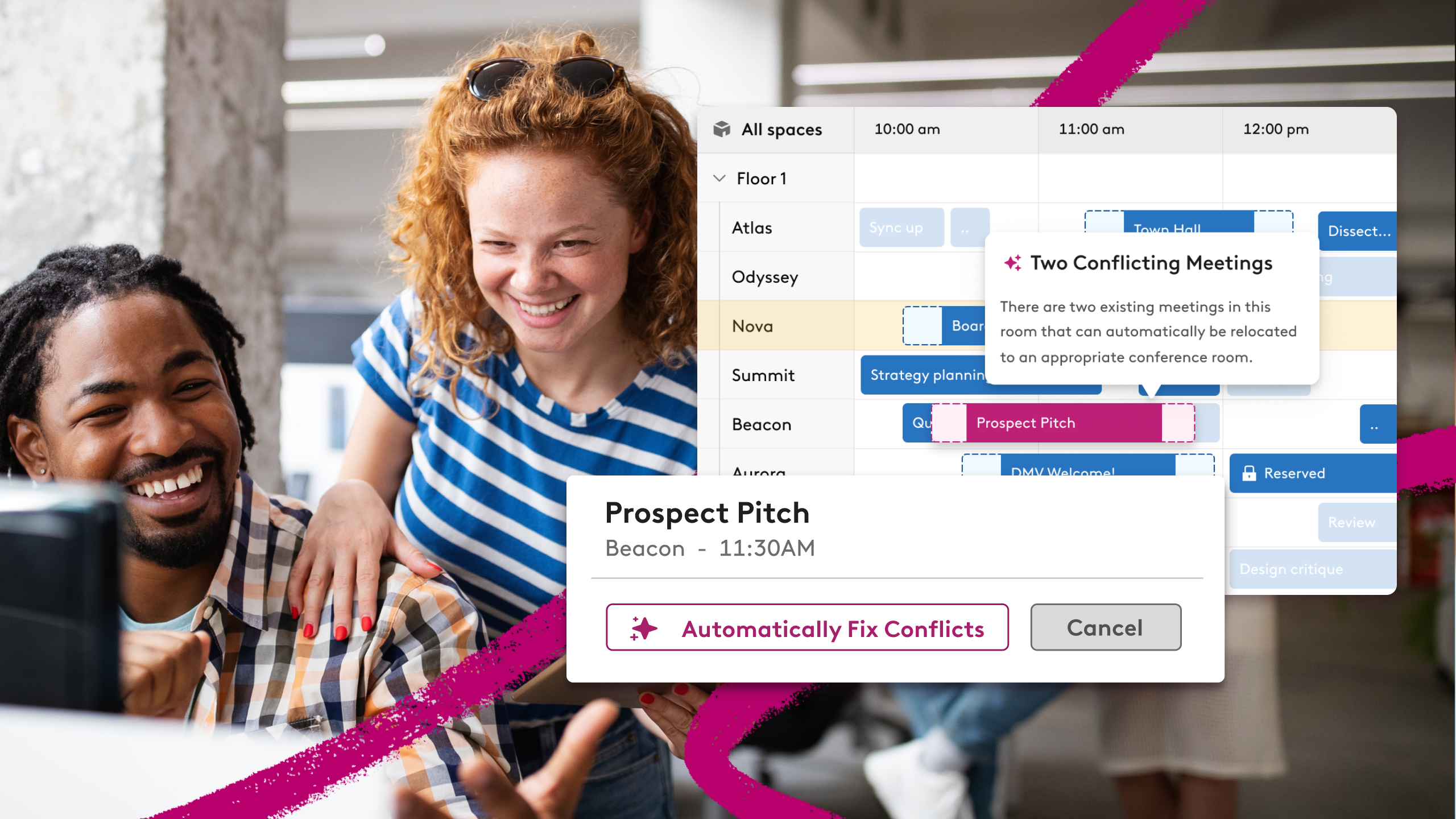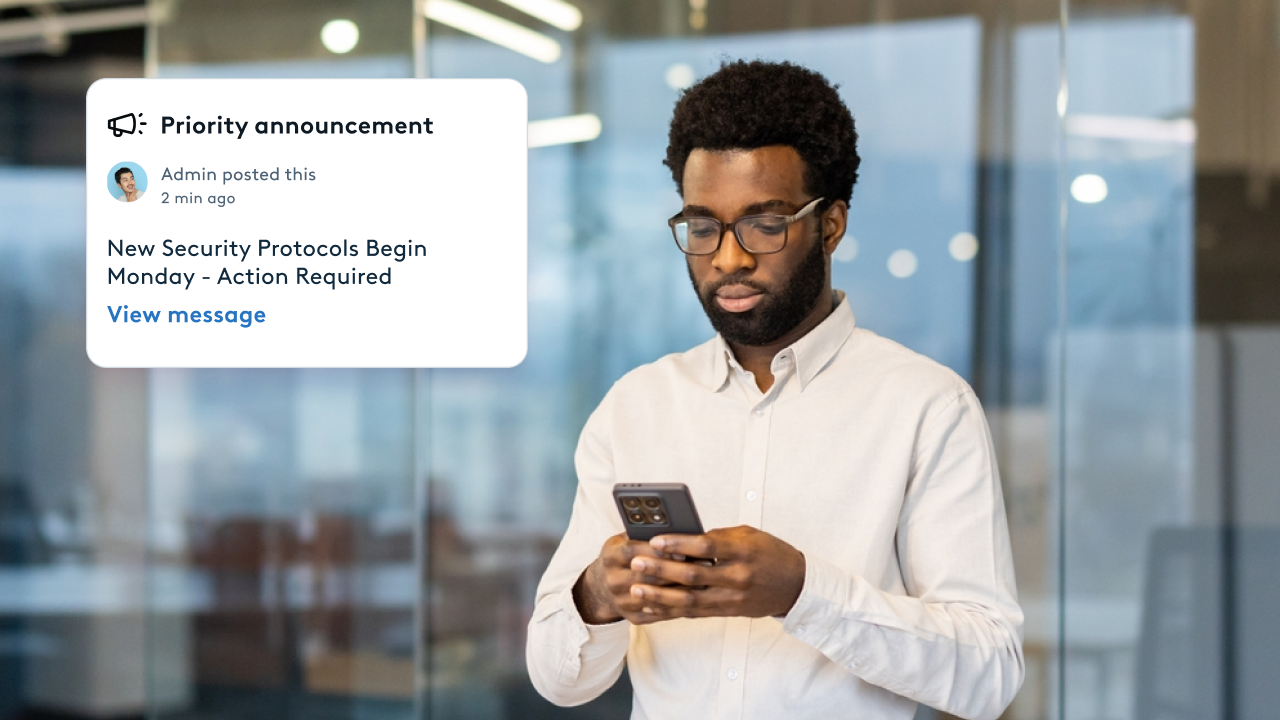Workplace trends: The 8 mistakes you’re making in your office design

Workplace Architect Ashley Dunn explains what many of us are getting wrong. And how to get it right.
I've been researching workplace trends and office design day in and day out for over a year now. And let me tell you: Design Museum Boston's morning event "The Trend of Trendy Workplaces" dished out some of the best workplace insights I’ve come across.An expert in the field, the main speaker and architect Ashley Dunn has been working with companies large and small, across industries, to hone in on the best workplace design for them.She offered many perspectives to consider, whether you’re the client building a new office, the architect or interior designer working on the proposal, or another supporting role in the project.
In the world of workplace trends, here are the 8 major design mistakes you might be making:
1. Stop following workplace trends at face value
Reiterated several times throughout the morning was Ashley Dunn’s observation that, “Workplace trends, when followed by themselves, can be dangerous.” Just because publications are cramming clicks by listing off the latest workplace trends found at Google, Airbnb, Etsy, and more, doesn’t mean the same design element will work for your office.That’s probably how we got into the world of unused ping-pong tables everywhere in the first place.
Does anyone even like ping-pong at your office? Instead, focus on your own culture and work style, and what types of perks you could deliver through workplace design that would benefit your employees most. Dunn also advised to, “distinguish between thoughtful design and general soundbites.” Perhaps a chessboard table would delight engineering staff more than a ping-pong table since it would actually promote creative problem-solving.
2. Don’t subscribe to office design assumptions made by clickbait-y articles
Be careful what you read. A lot of publications will jump on the bandwagon of whatever office design element is the latest “love to hate” concept. Makes sense, it’s easier to relate to people over a common complaint than a common appreciation. For example, if you like a new coffee machine, you might mention it once and move on. But when you dislike something, like a new coffee grinder, you harp on it over and over again, which doesn’t help the issue at all (if there really is one).Another prime example of this is the open office. People love to hate the open office -- just ask Google.
A quick search will reveal the most recent study by Harvard that stated that open offices are bad for face-to-face interaction. But there were only two offices sampled, the open office part of them was not well-designed, and the research lacked depth. So the clickbait assumption, “Open offices don’t work” shouldn’t be taken as gospel. Instead, examine your workplace culture and style and think about the strategies you want to enhance and empower those. From there, working with an architecture firm like Dyer Brown, your team will discover design elements that will actually work for you.
3. Watch out for generalizations when describing your culture and work style
If your go-to explanation of workplace culture and style is, “We have a lot of millennials,” or, “We have four generations mixed together,” or, “We are engineering heavy,” then you’re relying on generalizations to help you guide your office design.During her talk, Ashley Dunn of Dyer Brown showed examples of three vastly different, famous millennials, in an effort to show the spectrum a single millennial could fall on and how different we all are. Paraphrasing her talk, millennials choose one company to work at based on a culture, a career, a job.
That means each office should be different according to those facets. If millennials were all the same and wanted to work at the same physical place, then all offices would be identical. But they’re not. Everyone has different preferences, work styles, work culture contributions, etc. So bundling people based on general assumptions about their job title or generation is going to paint an inaccurate picture of what the ideal workplace is for them.Opt for instead a deeper understanding of how teams work. And don’t just focus on the core team that drives the majority of the business value. Understand the supporting roles as well, so the office isn’t just built for the company superstars.
4. A design element is not equal to a workplace strategy
It’s easy to get wrapped up in the tangible elements of office design. You’ll naturally want to start listing off the trending aspects you’ve seen in friends’ offices and on the web. But, as Ashley states, “A design element doesn’t define your workplace strategy.”Start with the strategies you want your office to meet first. One example from the expert architect: “a strategy could be to get people out of their private offices throughout the day.
So the corresponding design element in this example was a beautiful communal table in the centrally located kitchen. ”What are the major goals you want the office and its various areas to achieve? Think about those first, and stem the design decisions from there. Every element needs a reason and strategy to map back to for your office to be set up for success.

5. You do not create culture through office design. (Your culture dictates your office design)
A client once asked Ashley, “Help us design our culture.” But, as Ashley describes, everyone already has a culture. Laying workplace trends on top of culture isn’t going to work for anyone. In the rare circumstance that your company is still too young or small to have the culture you aspire to have, then reference your aspirational, five-year culture plan. But you’ve either got a fully baked culture or a vision of one. Tap into that!Identify the major parts you’ll need in your future workplace. Check the pulse on your work culture. Then, cater your workplace strategy and design to that. You’ll find a lot more success with adoption that way.
6. No set-it-and-forget-it in workplace trends and design
Speaking of employee adoption, Ashley brought up a point that I’d garner to wage not many folks think of: using policies and programming to support each space. “Build it and they will come,” doesn’t work so well in the workplace. It’s not enough to nail strategy and design, end up with a cafe, and expect the colleagues to naturally start visiting and interacting with the space as soon as it’s up.
But if you create a policy and roll out programming around that space, it’s easier for people to see the benefit and naturally, they’ll keep coming back.We are all creatures of habit. In the Robin office, we have a gorgeous communal kitchen table and a comfy lounge area right next to one another. Every other week, we hold our company all-hands meeting in that area, and because of the natural camaraderie the space promotes, people end up hanging out there afterward (or meeting back up in those spaces throughout the next week). The regular company-wide meeting encourages the ideal use case and creates a habit in all of us, associated with a warm and fuzzy memory of Friday afternoons spent with a cup of beer in hand.
7. Stop seeking input from only the executive team
Executive blindness: when the executive doesn’t experience something because they are the head honcho, and therefore doesn’t believe it exists. Sometimes room scheduling can be a case of executive blindness -- executives can grab any room they want!Ashley warns not to develop a space with input only from the executive team for fear of avoiding the major issues that are roadblocks to the rest of the workforce.
Set up a focus group with a variety of employees from different backgrounds and departments. Separate them from the executive context gathering sessions. Make sure you pose open-ended questions to get the most honest and direct feedback and ideas from the employees. Oftentimes they have the most direct line of sight on a solution to a problem.The fun part? Comparing the executive team’s summary with that of the focus group. Any differences? Uh oh.
8. Don’t create a space that isn’t usable for work
Real estate is really expensive. That’s not a surprise to anyone. So why do people design spaces that aren’t even usable for work? Sure, they look pretty and might end up on Office Snapshots. But that’s not accomplishing the end goal here of driving employee productivity and happiness.Ashley noticed a big increase in organizations building outdoor amenities spaces, like roof decks. As pretty as they might look, she warns that if you don’t make it usable for work, then it’s not going to get used. Her advice?
Make sure you have power outlets and furniture that’s comfortable to sit on. As Ashley describes, employees are getting used to alternative spaces like coffee shops, but they still need a small tabletop of some sort so they’re not juggling their laptop on their knees all day.Take the time to add in the couple of ancillary pieces that make a certain space workable and voila: comfort and utility.
Do you have any trendy workplace elements that are falling flat? Let us know @robinpowered.













